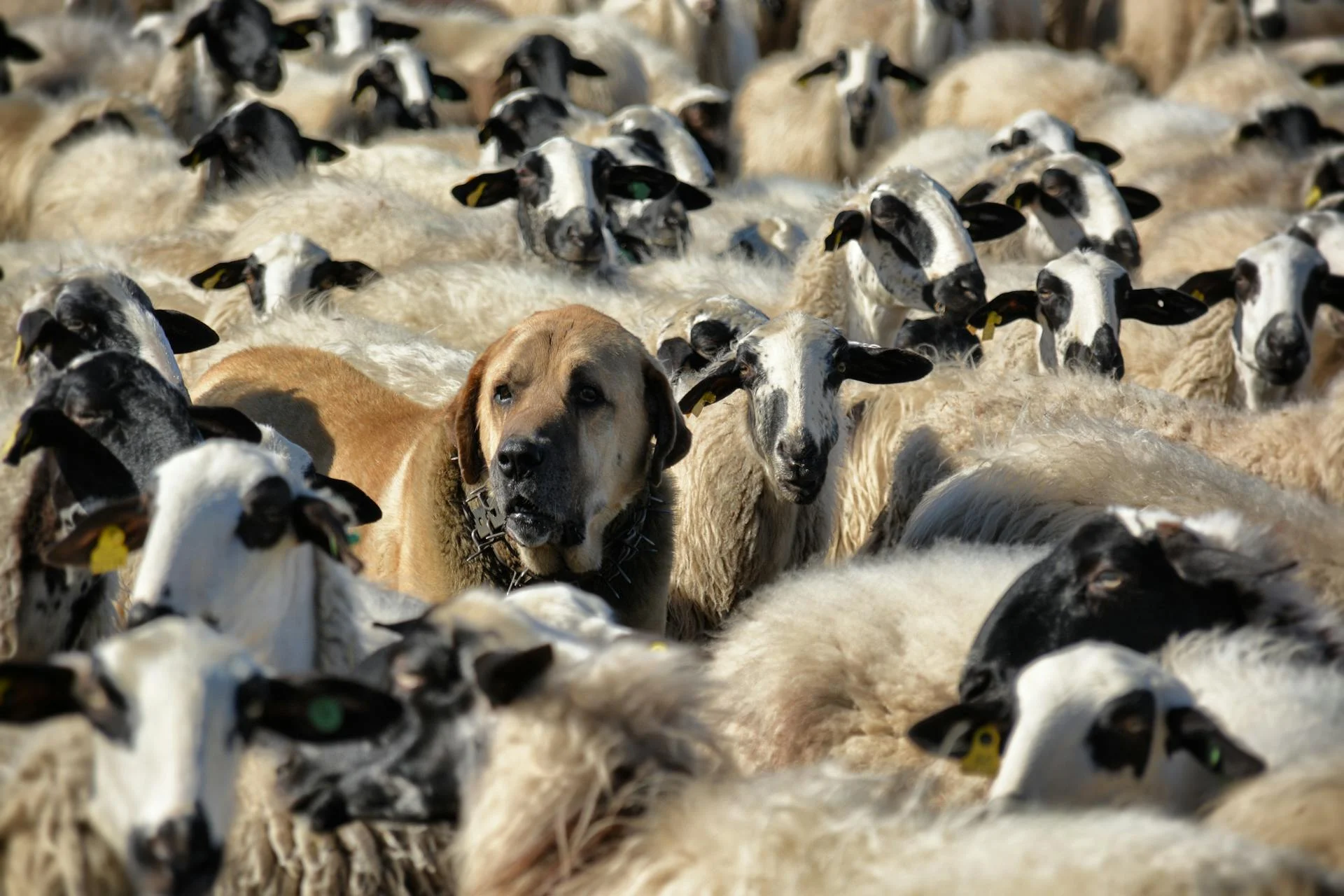
The woolly bear caterpillar may look cute and fuzzy, but it's actually a toxic threat to your furry friends.
Dogs are particularly susceptible to the caterpillar's venom because they often try to eat them when they come across them.
If your dog ingests a woolly bear caterpillar, it can cause severe vomiting, diarrhea, and even abdominal pain.
Symptoms can appear within 12-48 hours of ingestion, so keep a close eye on your pup after a possible encounter.
What is a Wooly Bear Caterpillar?
The woolly bear caterpillar is actually the larval form of tiger moths, and there are several species of these moths, such as the Giant Leopard moths, Isabella tiger moths, and Eastern Tiger moths.
These caterpillars are known for their thick coat of bristle-like hair, which is a distinctive feature of their appearance.
The woolly bears have a black-colored body with a rustic brown band in the middle, although the color of their body can change with age and their feeding habits.
They can be found across different parts of North America, Mexico, and Southern Canada, where they eat leaves from small plants, elms, and maples.
Are Caterpillars Poisonous?
Some caterpillars can be poisonous to dogs, but not all of them. In fact, many caterpillars are harmless, but it's essential to be aware of the venomous ones.
Caterpillars with fuzzy or hairy exteriors can be particularly hazardous, as they contain venomous spines or hairs connected to poison sacs. These spines or hairs can cause a painful sting and potentially lead to allergic reactions in dogs.
Dogs may be attracted to caterpillars, especially the fuzzy ones, which can be found in many gardens. However, it's crucial to keep an eye out for venomous caterpillars and take precautions to avoid any contact between your dog and these potentially dangerous creatures.
Here are some venomous caterpillar species to be aware of:
If you suspect your dog has come into contact with a venomous caterpillar, it's essential to take action quickly. Ric Bessin, an entomologist at the University of Kentucky College of Agriculture, recommends clipping off the leaf or using a stick to relocate the caterpillar if it's in a place where it can cause problems.
Signs of Contact and What to Do
If your dog has come into contact with a poisonous caterpillar, look out for excessive scratching or licking on a particular part of their body, especially in areas with less fur.
Itching and discomfort can lead to behaviors such as pawing, head shaking, and drooling. Vomiting and swelling of the mouth may occur if the caterpillar has touched the dog's mouth or face.
Increased salivation, whimpering, becoming less active, refusing to eat, and showing aggressiveness are other signs of contact you should be attentive to. If you suspect your dog has been stung, it's essential to act quickly to alleviate their discomfort and minimize potential harm.
Signs of Contact, Dog Stung: What to Do
If you suspect your dog has been stung by a caterpillar, it's essential to be aware of the signs of contact. Excessive scratching or licking on a particular part of their body is a common sign, often occurring on areas with less fur.
Itching and discomfort may lead to behaviors such as pawing, head shaking, and drooling. If the caterpillar has touched the dog's mouth or face, vomiting and swelling of the mouth may occur.
Increased salivation, whimpering, becoming less active, refusing to eat, and showing aggressiveness are also possible signs of contact. If you notice any of these behaviors, it's crucial to take action immediately.
To alleviate your dog's discomfort, rinse the affected area immediately with water. Wear protective gloves to prevent further contact with the caterpillar's venomous spines or hairs.
If you can see caterpillar hairs on the dog's skin, use tape to carefully remove them. Applying a cold compress or a sting relief cream to the affected area can help reduce swelling and alleviate pain.
It's also essential to determine the type of caterpillar your dog has encountered, if possible, as different species may require different treatments. Contact a veterinarian for further guidance and potential medical treatment if the dog's symptoms persist or worsen.
Here are some specific caterpillars to watch out for, along with their habitats and active periods:
What to Do with a Caterpillar
If you come into contact with a caterpillar, don't brush it from your skin. Swatting off the caterpillar makes it more likely that the venomous hairs or spines will be left on your clothing.
Carefully remove the caterpillar with a stick or another object. This is the best way to ensure that the venomous parts don't remain on your skin.
Take a shower to wash away the hairs and cool down. This might help alleviate the allergenic reaction.
Wash your contaminated clothes as well, as a few hairs or spines might remain. This will help prevent any further irritation.
Don't panic over toxic caterpillars, as they are quite rare. In fact, experts say it's one of the most miserable days of your life, but it's so infrequent as to not be worth worrying about.
Spotting and Handling Venomous Caterpillars
Caterpillars that are brightly colored or have spines or hairs are probably venomous and should not be touched. This is because these features often contain venomous spines or hairs connected to poison sacs.
Some venomous caterpillars, like the Tussock Moth Caterpillar, are commonly found in North America, particularly in regions from Texas to Alberta. They are most active in May and June and prefer to feed on birch, willow, aspen, and poplar trees.
If you come across a caterpillar with spines or hairs, it's best to clip off the leaf or use a stick to relocate it, as advised by Ric Bessin, an entomologist at the University of Kentucky College of Agriculture.
Venomous caterpillars like the Puss Caterpillar can be found in various habitats, including fields, gardens, and urban areas. They are active in late spring and fall and often prefer oak, elm, hackberry, maple, and sycamore trees as hosts.
To safely remove a venomous caterpillar from your skin, carefully use a stick or another object to remove it. Swatting off the caterpillar makes it more likely that the venomous hairs or spines will be left on your clothing.
The Saddleback Caterpillar has a distinctive appearance that may attract a dog's attention. They emerge in February and March and feed on a variety of plants, including sunflowers, apples, asters, blueberries, grapes, and corn.
Additional reading: What Can You Feed Dogs Other than Dog Food
If you come into contact with a venomous caterpillar, take a shower to wash away the hairs and cool down. Wash your contaminated clothes as well, as a few hairs or spines might remain.
The Buck Moth Caterpillar feeds on leaves of oak tree species and is most prevalent during April and May. They can spend up to two years in the pupal stage.
Here are some venomous caterpillars to be aware of:
- Tussock Moth Caterpillar: Commonly found in North America, particularly in regions from Texas to Alberta.
- Puss Caterpillar: Found in various habitats, including fields, gardens, and urban areas.
- Saddleback Caterpillar: Emerges in February and March and feeds on a variety of plants.
- Buck Moth Caterpillar: Feeds on leaves of oak tree species and is most prevalent during April and May.
Frequently Asked Questions
What happens if a dog eats a furry worm?
If a dog ingests a caterpillar, it may experience irritation in the mouth, esophagus, and stomach due to the caterpillar's hairs. While the caterpillar itself is not toxic, the hairs can still cause discomfort for your dog.
What happens if my dog eats a caterpillar?
If your dog ingests a caterpillar, it may experience symptoms like drooling, discomfort, and irritation, as well as more serious issues like gastritis and difficulty swallowing. Seek veterinary care if you suspect your dog has eaten a caterpillar, as treatment is largely symptomatic and supportive.
Sources
- https://www.whatsthatbug.com/are-woolly-bear-caterpillars-poisonous/
- https://www.hummingbirdsplus.org/nature-blog-network/are-fuzzy-caterpillars-poisonous-to-dogs/
- https://www.whatsthatbug.com/woolly-bear-caterpillar-predators/
- https://www.familyhandyman.com/article/woolly-bear-caterpillar/
- https://www.usatoday.com/story/news/nation/2019/10/16/puss-american-dagger-moth-what-know-poisonous-caterpillars/3974965002/
Featured Images: pexels.com


